EMVA 1288 Overview: Imaging Performance

Certain terms and specifications that relate to the imaging performance of a camera are referneced on our website. This page provides a simple and straightforward description of these specifications.
What specifications are tested and what do they mean?
Quantum EFFICIENCY (abbreviated as QE)
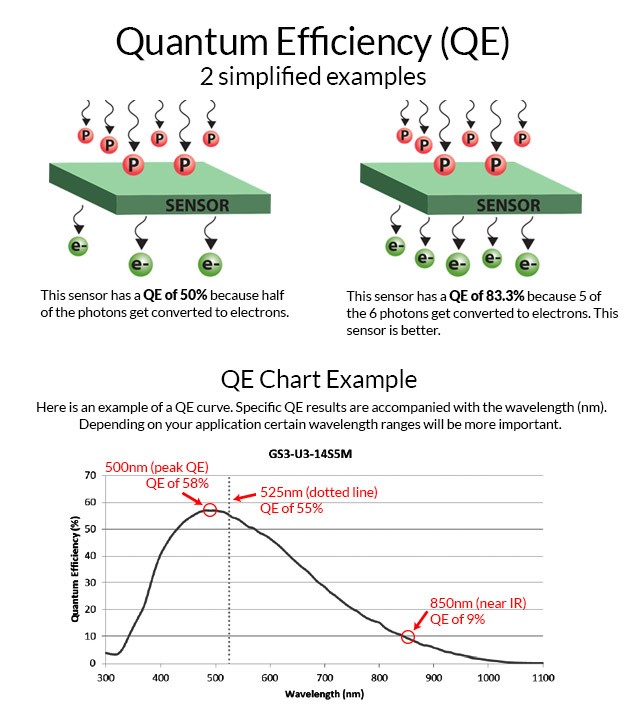
Unit of measurement: Percent (%)
Definition: The percent of photons converted to electrons at a particular wavelength by the sensor.
What does this mean? A higher QE means greater light sensitivity, which is especially beneficial in low-light applications. In addition, certain sensors may be geared towards better sensitivity at different wavelength ranges. Depending on your application, QE results at certain wavelengths might be more important than others. For example, higher QE in the near-IR range (850 - 950nm) is important in low-light traffic monitoring. Some of the best sensors FLIR offers have a peak QE of 70%-80% (refer to image for chart example). No sensor is 100% efficient.
What affects QE results? The manufacturer's sensor design. Newer sensors, such as Sony Pregius sensors, tend to have higher QE.
TEMPORAL DARK NOISE (also known as Read Noise)
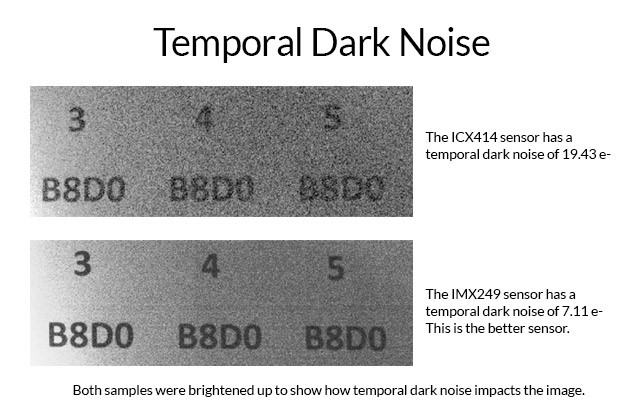
Unit of measurement: Electrons (e-)
Definition: Noise in the sensor when there is no signal.
What does this mean? Lower temporal dark noise means a cleaner image. All sensors exhibit some level of temporal dark noise, which is caused by the electronics on the sensor. Temporal dark noise is not affected by exposure time, and does not include shot noise.
What affects temporal dark noise? The sensor and camera manufacturers' designs. Newer sensors take advantage of techniques to lower temporal dark noise. Camera manufacturers can futher reduce noise through lowering the pixel clock and turning off certain electronics around the sensor.
SATURATION CAPACITY (also known as Full Well Depth)
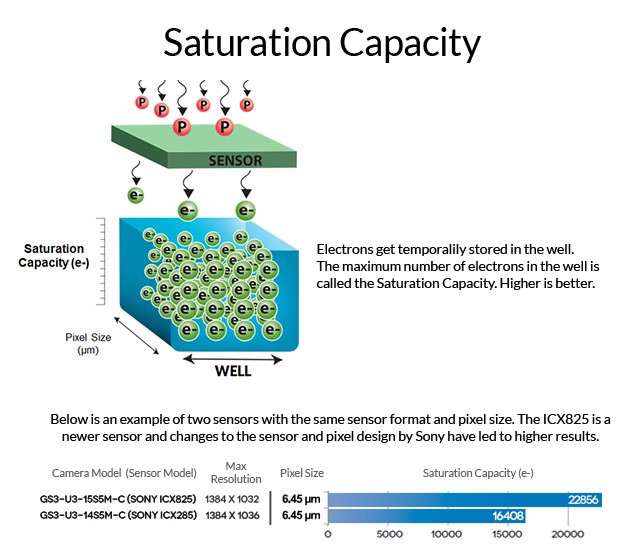
Unit of measurement: Electrons (e-)
Definition: Amount of charge that a pixel can hold.
What does this mean? Each pixel is like a well or bucket that can hold electrons. Saturation capacity shows the maximum number of electrons that an individual pixel can store and is related to a sensor's pixel size. The higher the saturation capacity, the higher the potential dynamic range. The lower the number, the faster the pixel will reach maximum charge. If you imagine all the pixels reaching saturation capacity, it would resemble a white screen on your monitor. Saturation capacity on its own isn't a perfect metric to base sensor performance on because temporal dark noise and quantum efficiency work in relation to it for dynamic range and signal to noise ratio results.
What affects the results? The manufacturer's sensor design. Newer sensors with improved pixel designs will have higher saturation capacity results. In general, though, the larger the pixel size the more likely the saturation capacity will be higher.
SIGNAL TO NOISE RATIO (abbreviated as SNR or SN)
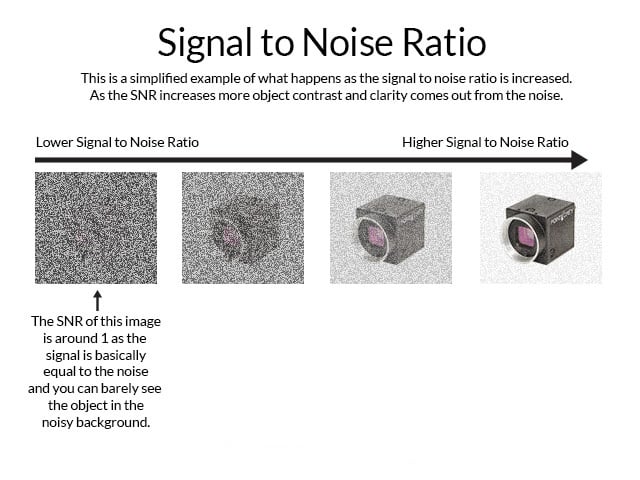
Unit of measurement: Decibels (dB) or Bits
Definition: Ratio between the signal at saturation versus the noise at saturation. Noise at saturation is predominantly shot noise.
What does this mean? The higher the number the more contrast and clarity you'll have in relation to image noise. For example, if you have a SNR of 1, the object you're imaging will be indiscernible to the noise in the image. A high signal-to-noise ratio is an important specification for very-low-light applications such as darkfield microscopy and fluorescence imaging. All sensors in the FLIR camera portfolio have a SNR above 35 dB with the best achieving results higher than 40 dB.
What affects the results? The sensor and camera manufacturers' designs. Temporal dark noise, shot noise, quantum efficiency, and saturation capacity results will affect the ratio.
Sign Up for More Articles Like This
DYNAMIC RANGE
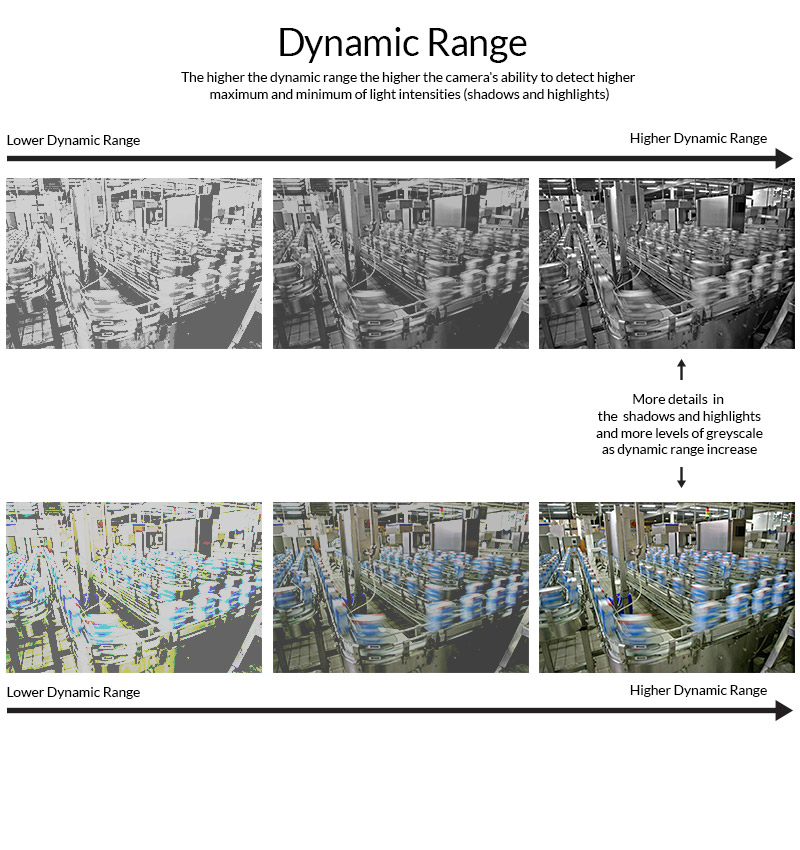
Unit of measurement: Decibels (dB) or Bits
Definition: Ratio between the signal at saturation versus the minimum the sensor can measure.
What does this mean? The higher the number, the more levels of greyscale detail you'll achieve in the image. In other words, dynamic range describes the camera's ability to detect maximum and minimum light intensities (shadows and highlights). Models with higher dynamic range can detect more detail. In outdoor applications where bright and dark areas are imaged at the same time or cameras are exposed to rapidly changing lighting conditions, a higher dynamic range is beneficial.
What affects the results? The sensor and camera manufacturers' designs. The camera's Analog to Digital Converter (ADC) can also affect the dynamic range as a lower bit ADC could cap it.
ABSOLUTE SENSITIVITY THRESHOLD
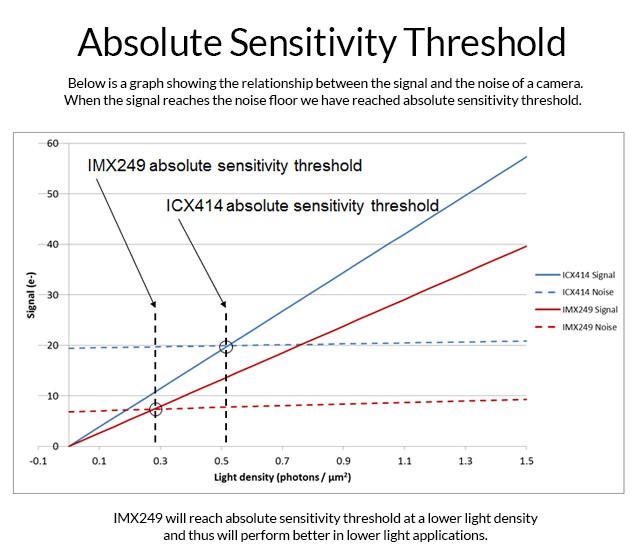
Unit of measurement: Photon (γ)
Definition: Number of photons needed to have signal equal to noise.
What does this mean? The lower the number of photons, the better the camera can identify useful imaging data from camera noise. This specification is more important for applications in very-low-light situations. Unlike looking at just QE or temporal dark noise, absolute sensitivity threshold gives a better understanding of low-light performance because it already takes into account the QE and temporal dark noise of the sensor, along with shot noise.
What affects the results? The sensor and camera manufacturers' designs. Absolute sensitivity threshold takes into account temporal dark noise, shot noise, and the quantum efficiency of the sensor.
GAIN
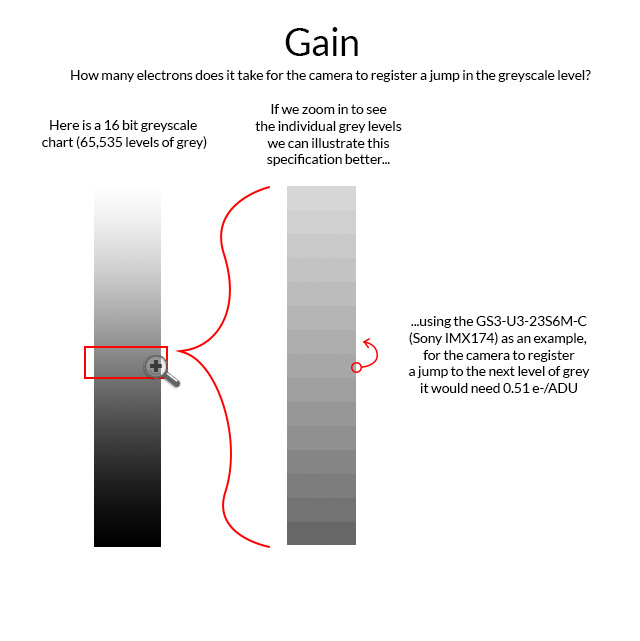
Unit of measurement: Electrons over 16 bit ADU (e-/ADU)
Definition: Parameter indicating how big a change in electrons is needed to observe a change in 16bit ADUs (better known as greyscale).
What does this mean? To understand this specification better, imagine a 16-bit greyscale chart. 16 bits of grey equals 65,535 unique levels of grey (see image). In order for the sensor to register a jump to the next grey level you would need a specific number of electrons. That is what this specification describes.
What affects the results? The sensor and camera manufacturers' designs. Saturation capacity and the specified ADU (in this case, we use 16 bit) will change the results.
Where can I Find Cameras Sensor Results?
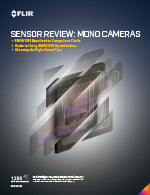
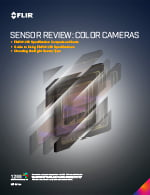
Camera Sensor Review
For a side-by-side comparison of our USB 3.1 and GigE models, download our Sensor Review PDFs. Note: These PDFs do not include our QE charts.